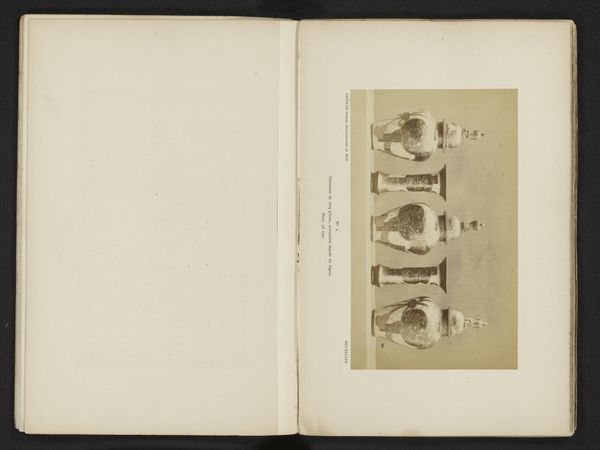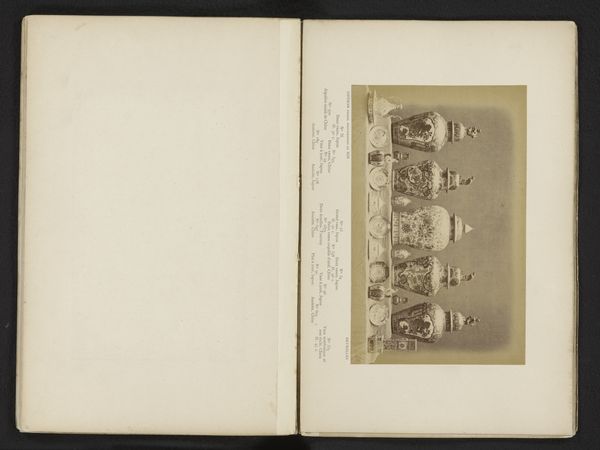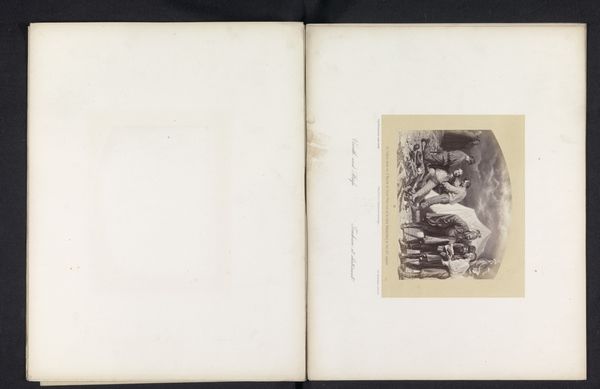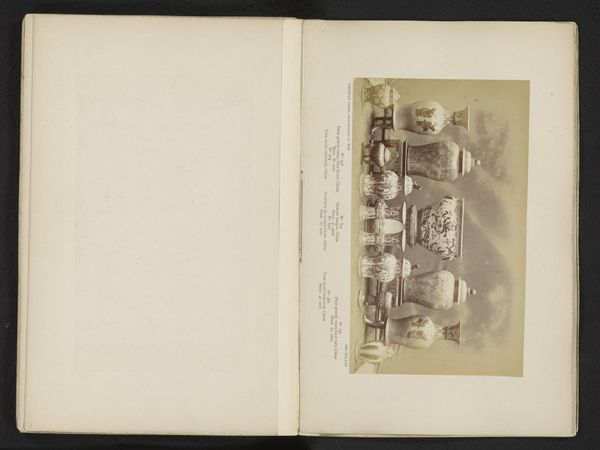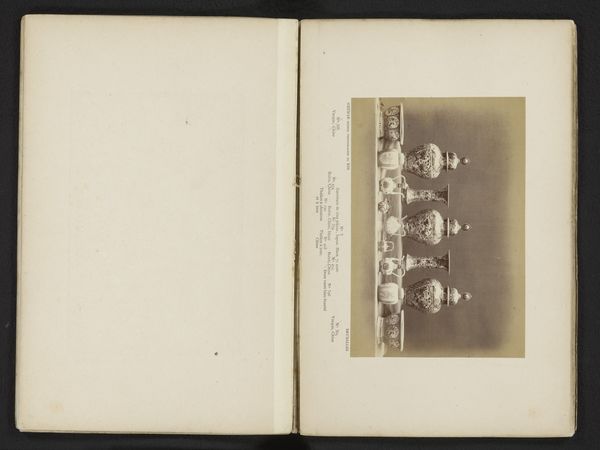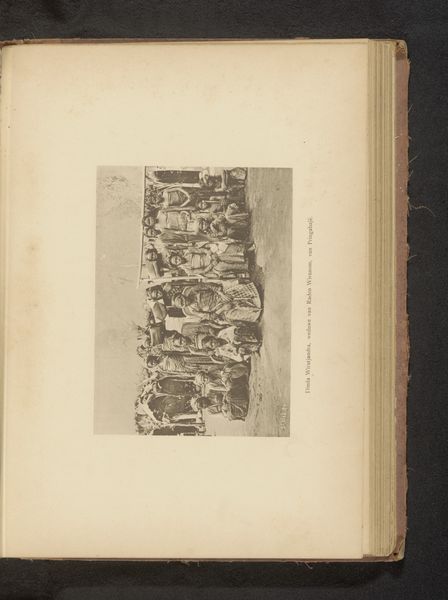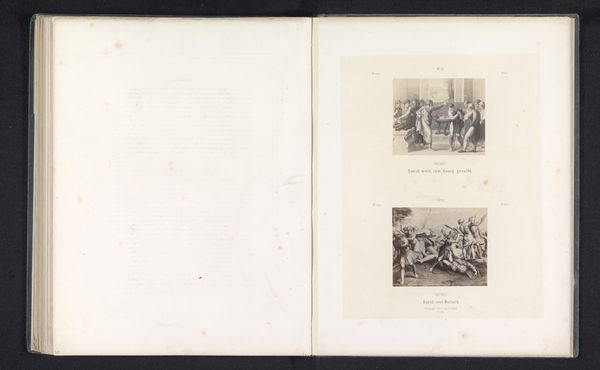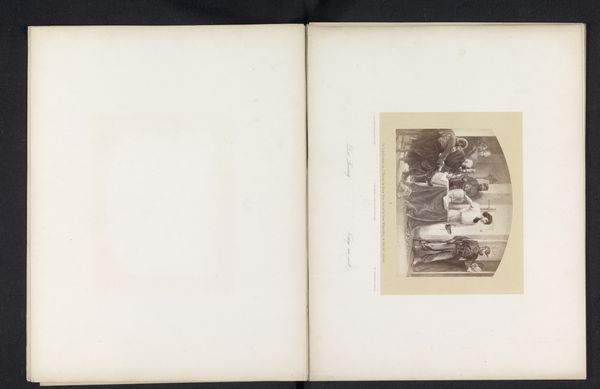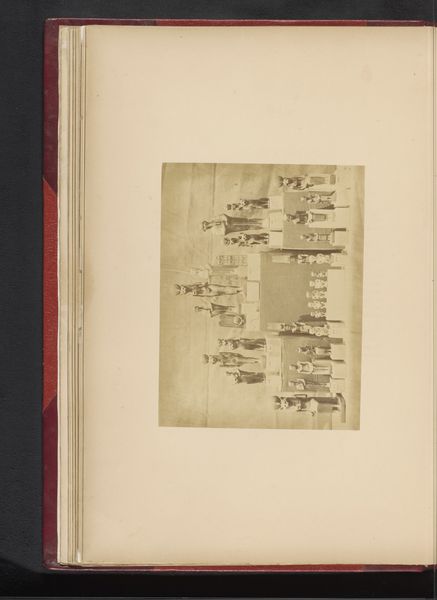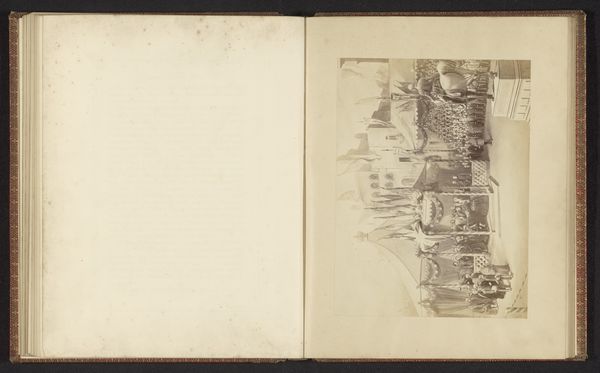
print, photography
# print
#
vase
#
photography
Dimensions: height 122 mm, width 180 mm
Copyright: Rijks Museum: Open Domain
Editor: Here we have "Sixteen Objects, including Chinese Vases," a photographic print made before 1875 by Ghémar Frères. The muted tones of the photo lend the objects an air of solemnity. I’m struck by the way the identical vases create repetition. What's your take on this photograph? Curator: From a materialist perspective, this photograph speaks volumes about the global networks of trade and taste in the 19th century. The very existence of this image, a photographic print documenting Chinese vases, highlights the industrial processes that made both the vases themselves and the reproduction of their image possible. Consider the labor involved. Where were these vases produced, and by whom? What social class had access to such luxury? Editor: That’s a great point! It wasn't just about owning these objects; it was also about showcasing them, like we're seeing here. What does that imply? Curator: Precisely. The photograph becomes a tool for disseminating and reinforcing status. This image, reproduced and circulated, participates in the creation of desire and reinforces class distinctions through material consumption. What kind of production facilitated photography? The mass reproduction of images influences how these objects are received. Editor: I see what you mean. The photograph transforms them from individual objects into symbols within a larger system of economic and cultural exchange. I’ll never see still-life arrangements of objects the same way again. Curator: Exactly! We move from viewing the vase to how this photographic print fits into a story of commerce, class, and artistic production.
Comments
No comments
Be the first to comment and join the conversation on the ultimate creative platform.


